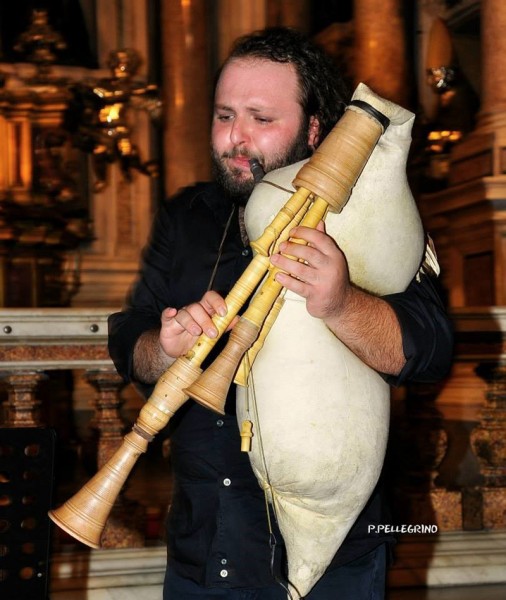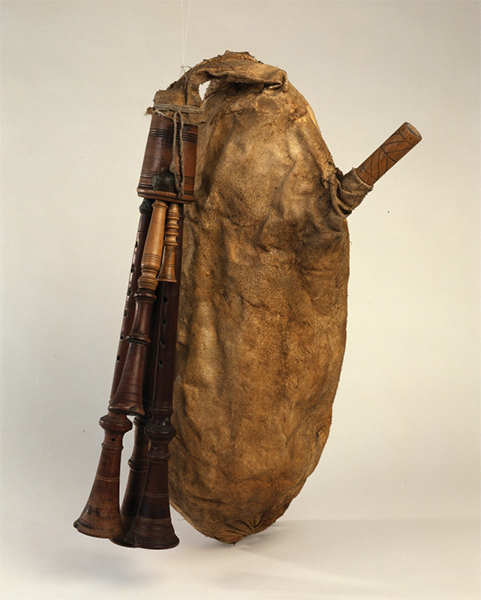For centuries, the sound of the zampogna, special bagpipes played by shepherds, has been a central part of Italian Christmas festivities. You'll hear this fabulous folk instrument in O Come, Shepherds, blending baroque Italian Christmas concertos with the heartfelt Christmas music of Southern Italy, performed by Toronto's own Vesuvius Ensemble with special guest artist, Tommaso Sollazzo on the zampogna.
By Tommaso Sollazzo
In central-southern Italy, there is a strong musical tradition connected with the zampogna. Around 20 different models exist, differing in size, tuning, materials, and scale. The oldest instruments, represented widely in iconography, are those in which the holes are stopped only by the fingers, whereas the more modern ones (from the 18th century onwards) have one or more keys.
The first memory I have of this unique instrument is from my childhood: I heard zampognari (a pair of zampogna and ciaramella players) who went to people’s houses during the holiday period playing Christmas novenas. It was then that I fell in love with the instrument and decided that when I grew up I would unlock its secrets. I was lucky to be born in the area of Cilento, where there is a strong zampogna tradition. During my research, I found that the caretakers of its secrets were elderly players from families who had passed down the zampogna tradition for generations. Each family had its own way of tuning the instrument, its own methods of carving reeds, and its own repertoire of music. The zampogna is not like most other instruments — it truly represents a way of life, a philosophy for living. Its use is inextricably linked to various times of the year. The waning moon during the winter months is the time to harvest cane, which after at least five years of seasoning, will serve for making reeds. The spring is the time for tanning hides, while the summer is perfect for the carving and tuning reeds. The autumn is the best time for cutting wood that will serve to make new instruments. All of these secrets had been passed down from father to son, and I was lucky enough to learn them from the people who keep them.
In Southern Italy there are many rites connected to the zampogna. Religious processions are accompanied by the zampogna’s music, as are secular festivities such as weddings and baptisms. But the most important tradition comes at Christmas time. Every church procures zampognari for services during the novena of the Immaculate Conception (December 1–8) and the novena of the arrival of the Christ child (December 16–24).
The instrument I play is a copy of a keyed zampogna made in the late 18th century by a luthier in the Lucana area. It has two chanters and two drones tuned to the dominant (the fifth note of the scale) in octaves. The woods used are Italian boxwood for the shafts, and field maple for the bells, which are protected by rings of buffalo horn. The air bag is made of a goat hide tanned with alum. The instrument was built by the master luthier Sergio di Giorgio of Reggio Calabria in 2012.
Hear Tommaso and the zampogna in O Come, Shepherds from December 4–8 and 10. More Info
Image Credits:
Tommasso Sollazzo by P.Pellegrino.
Zampogna by Musikinstrumenten-Museum, Staatliches Institut für Musikforschung.


